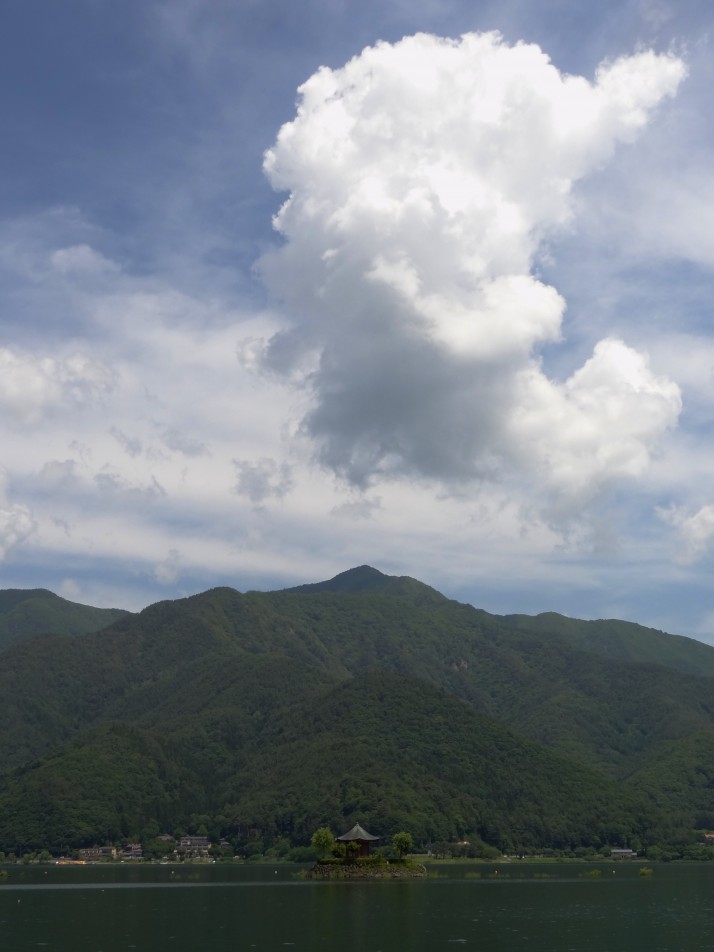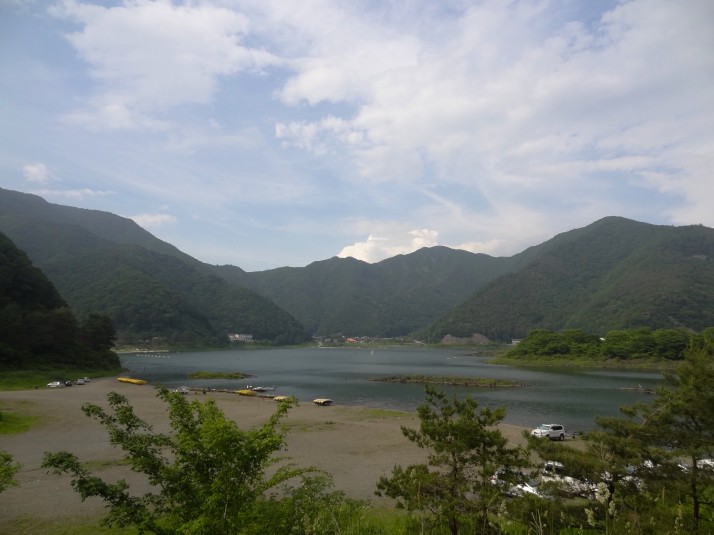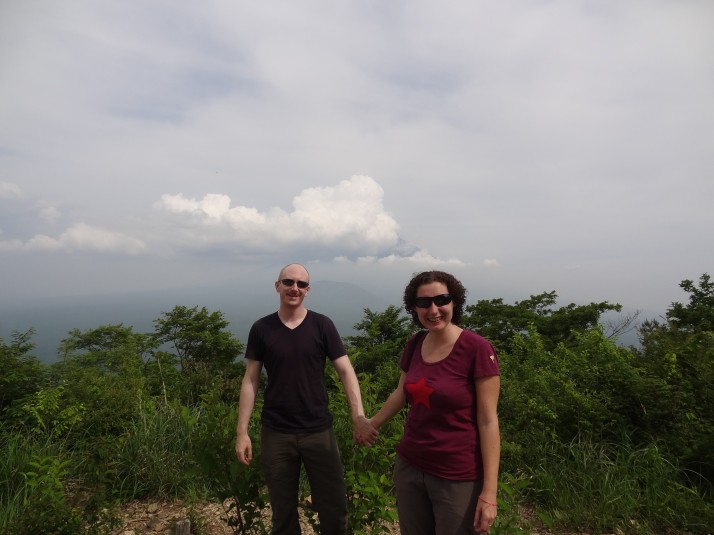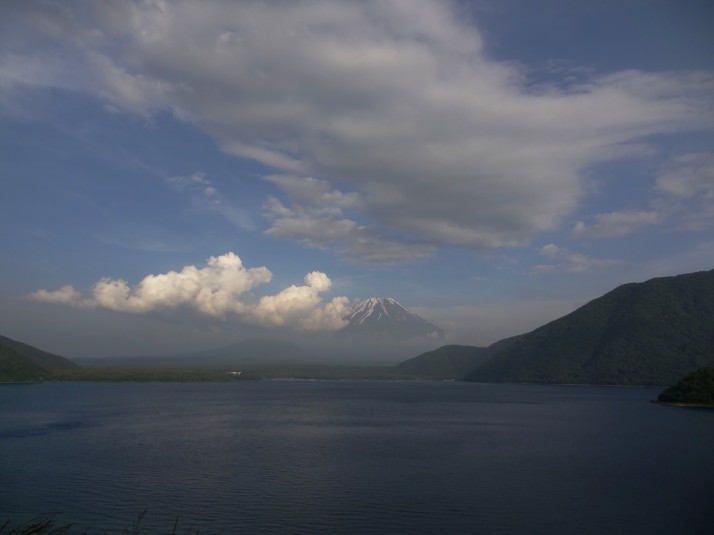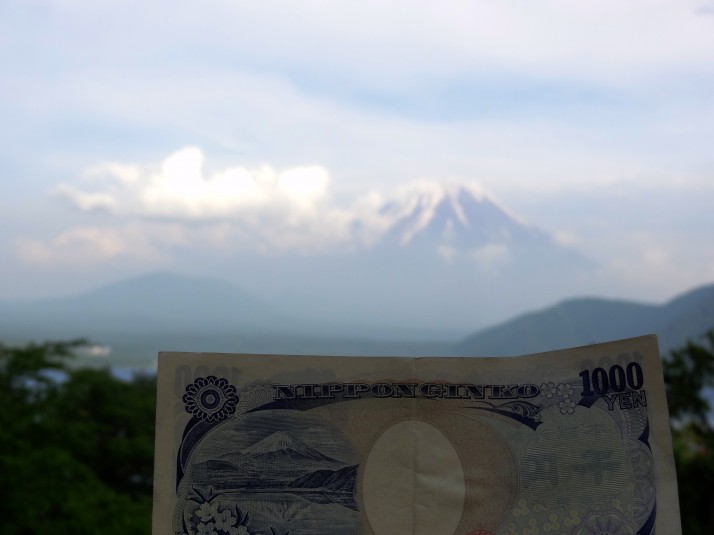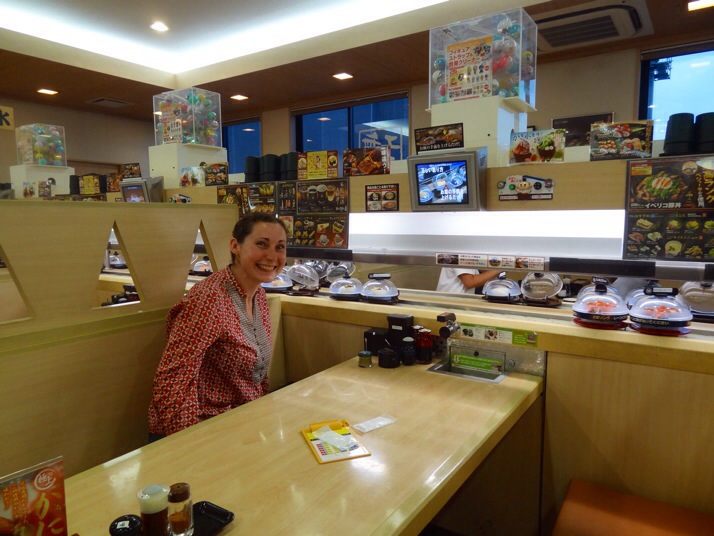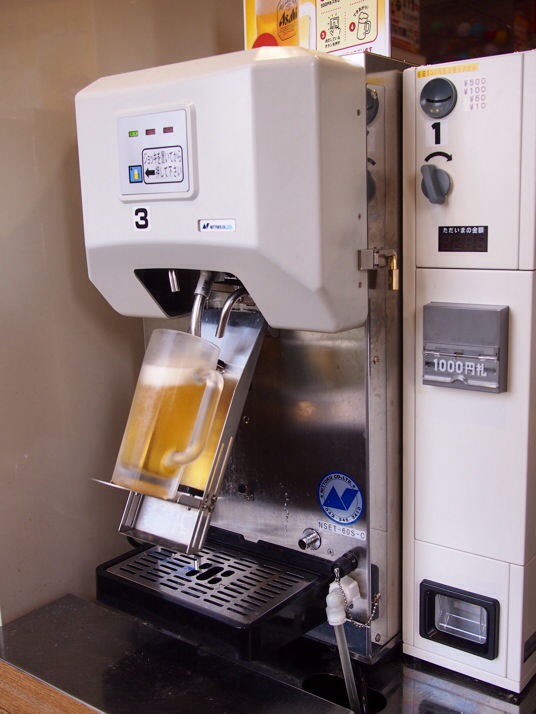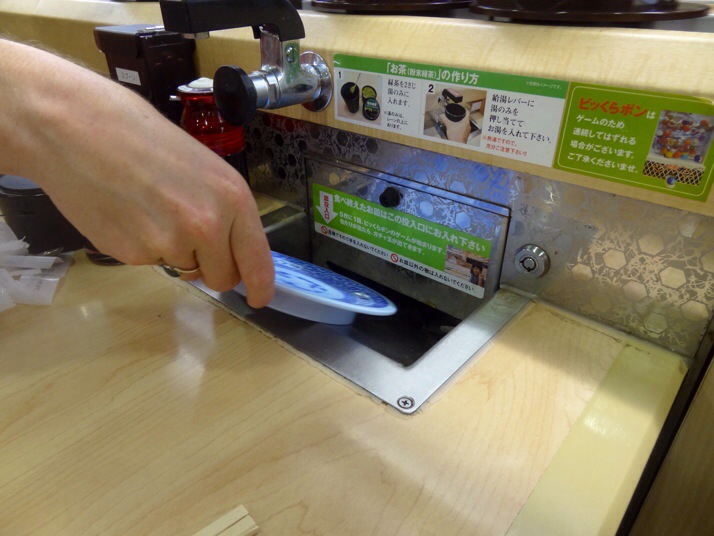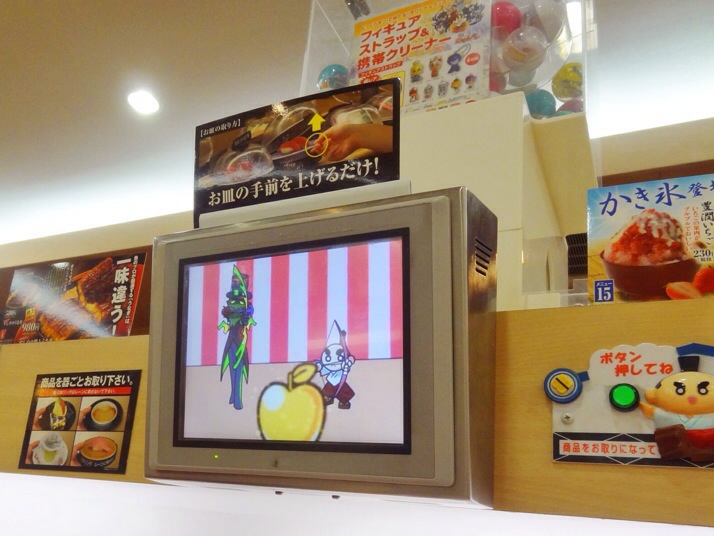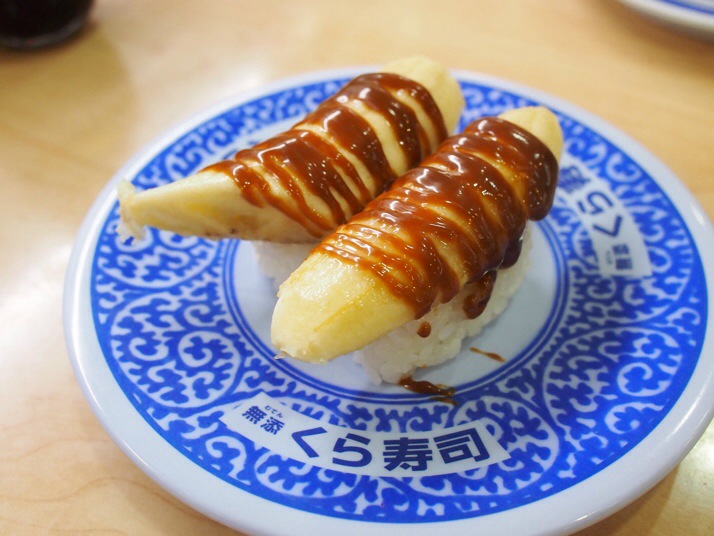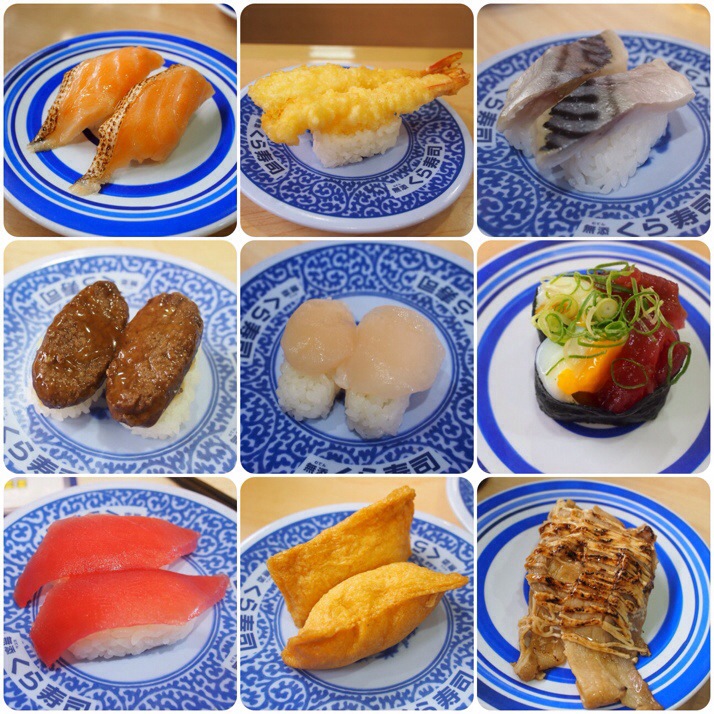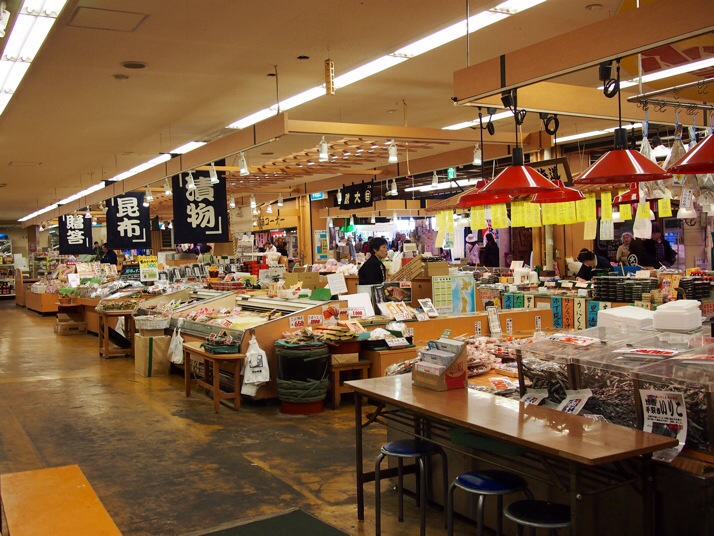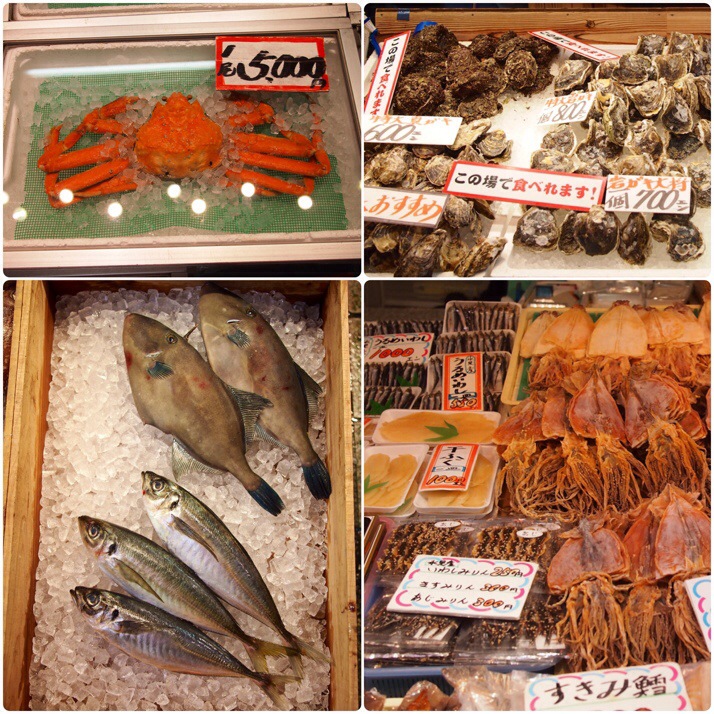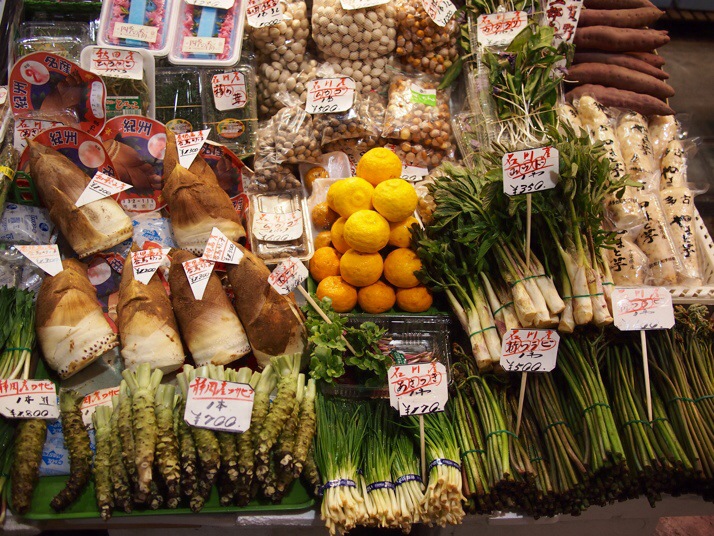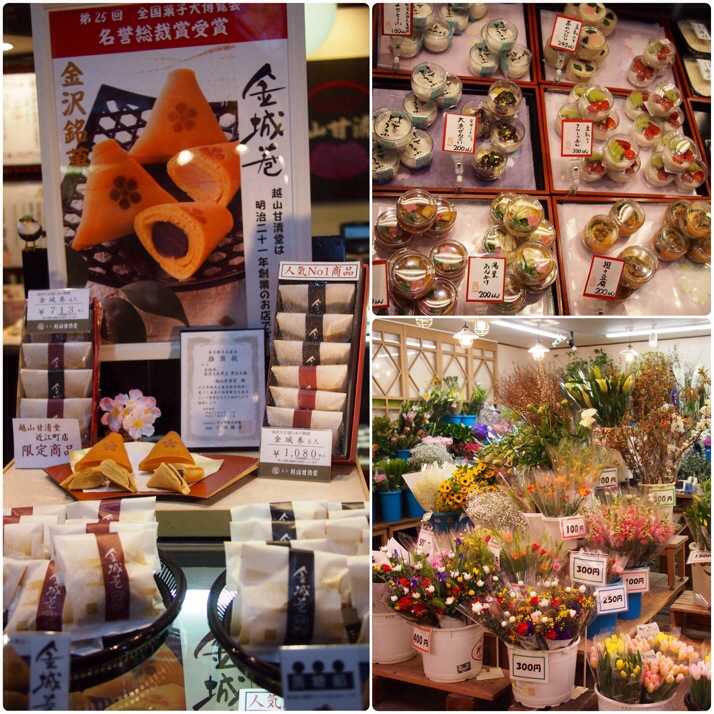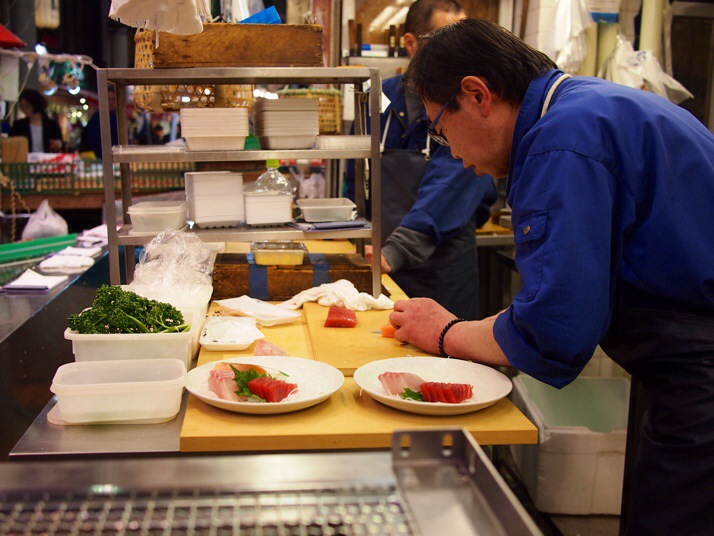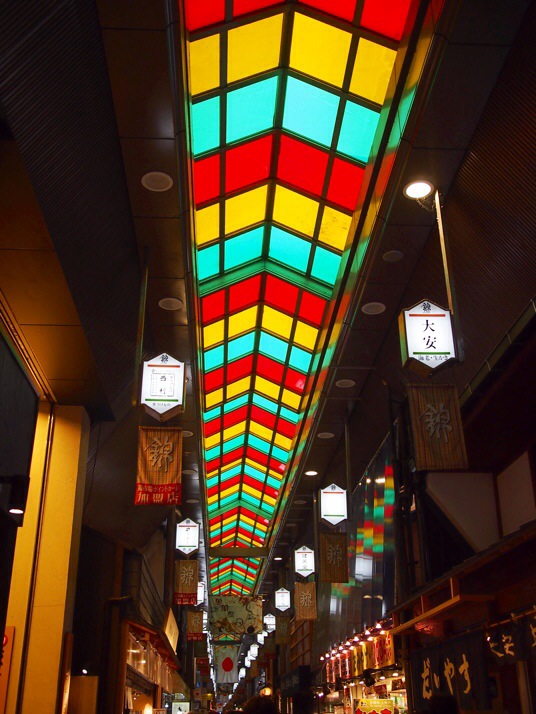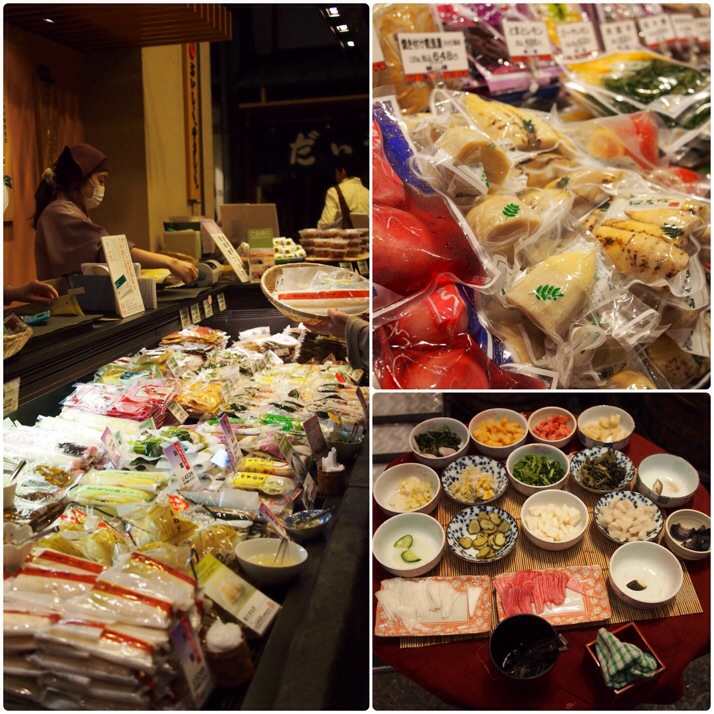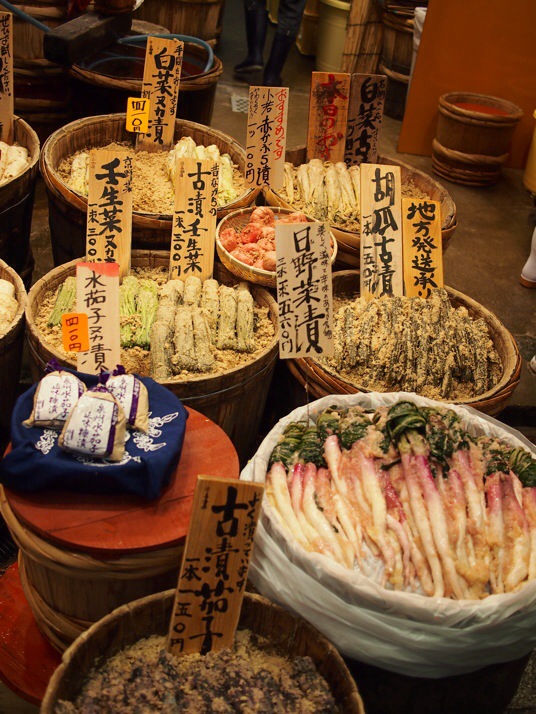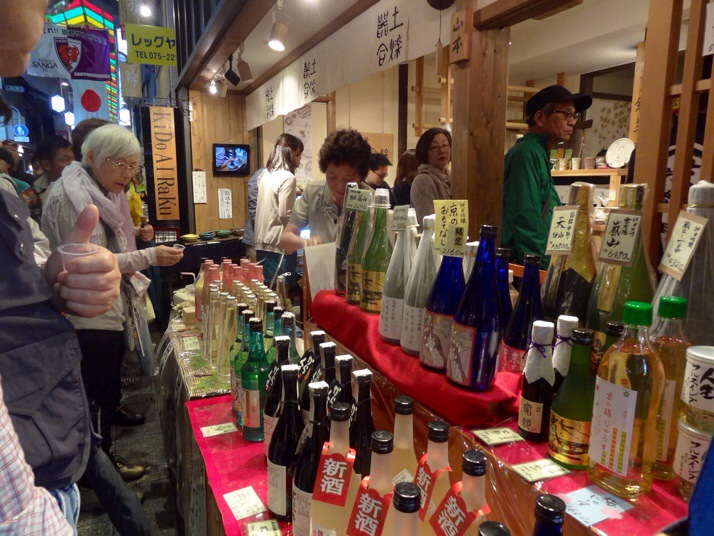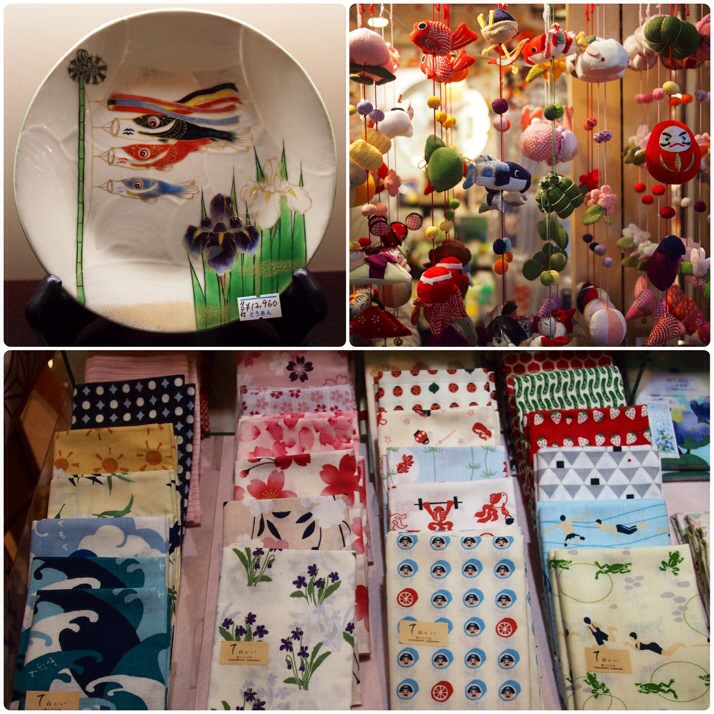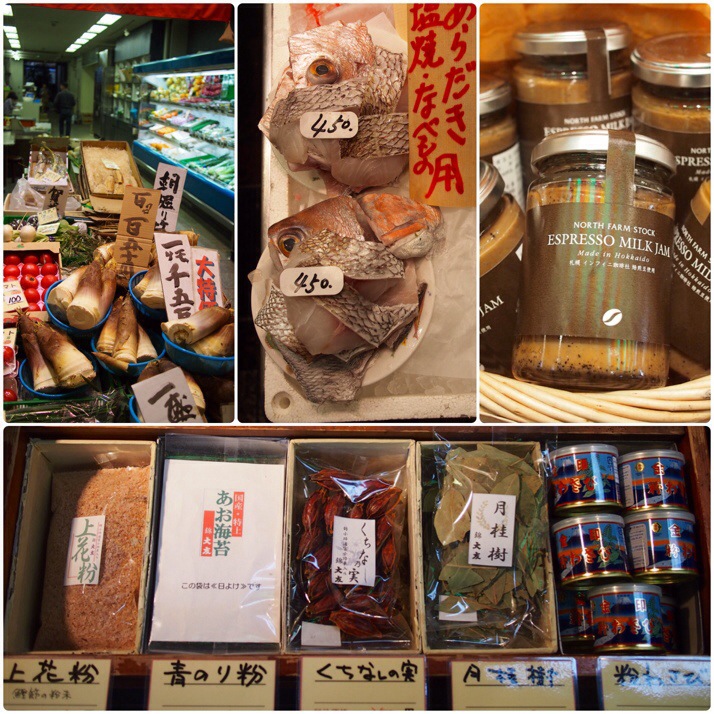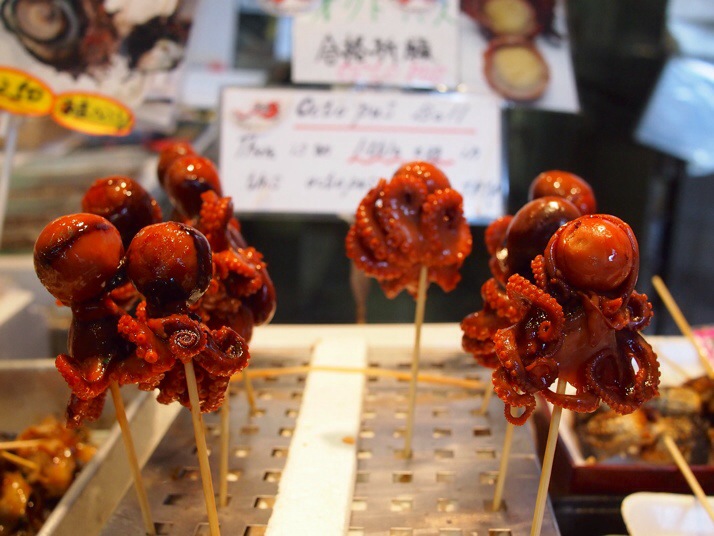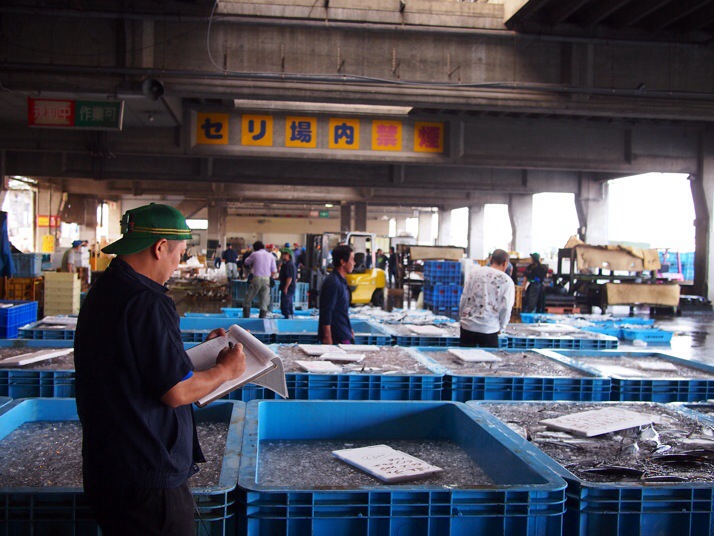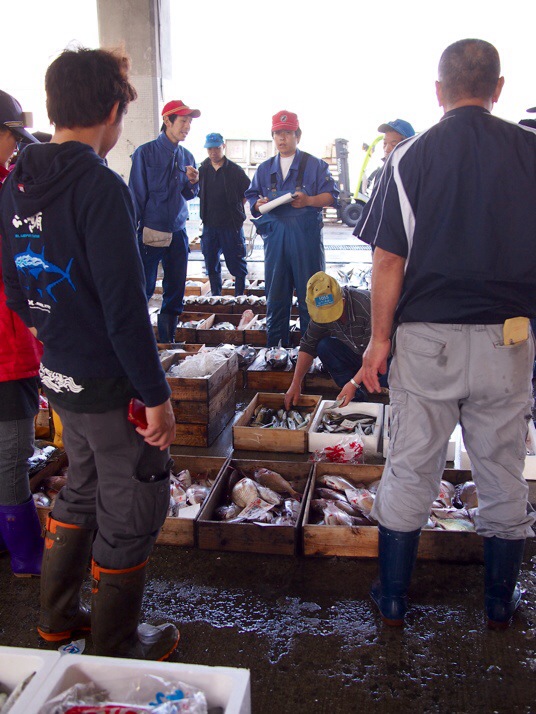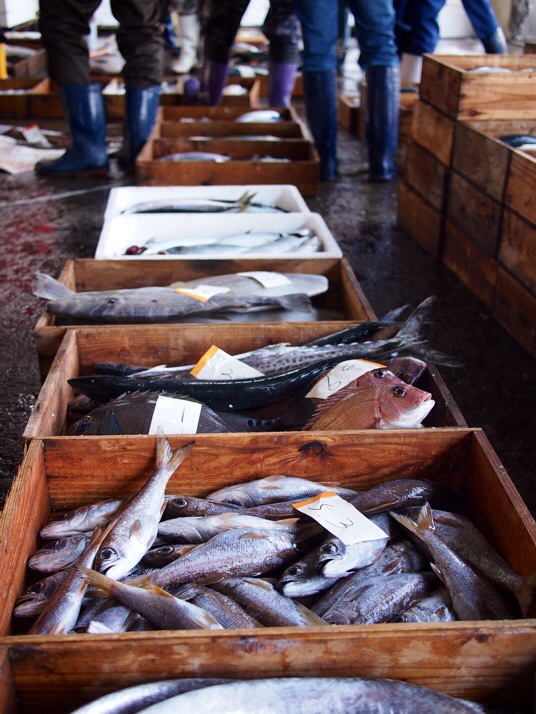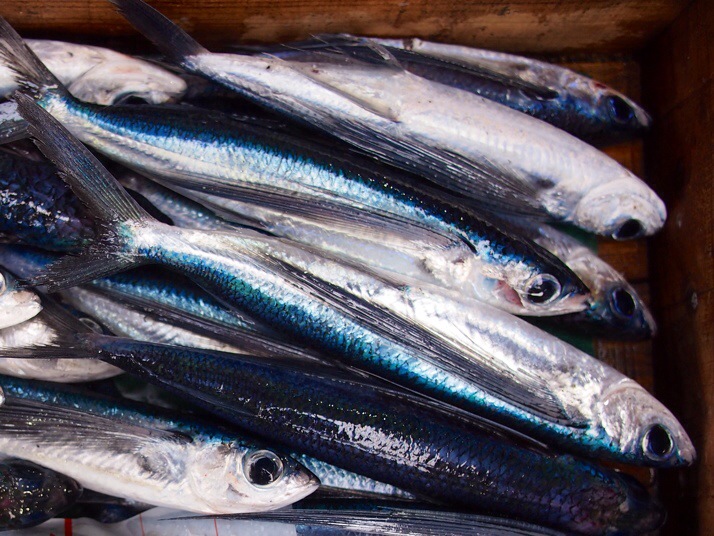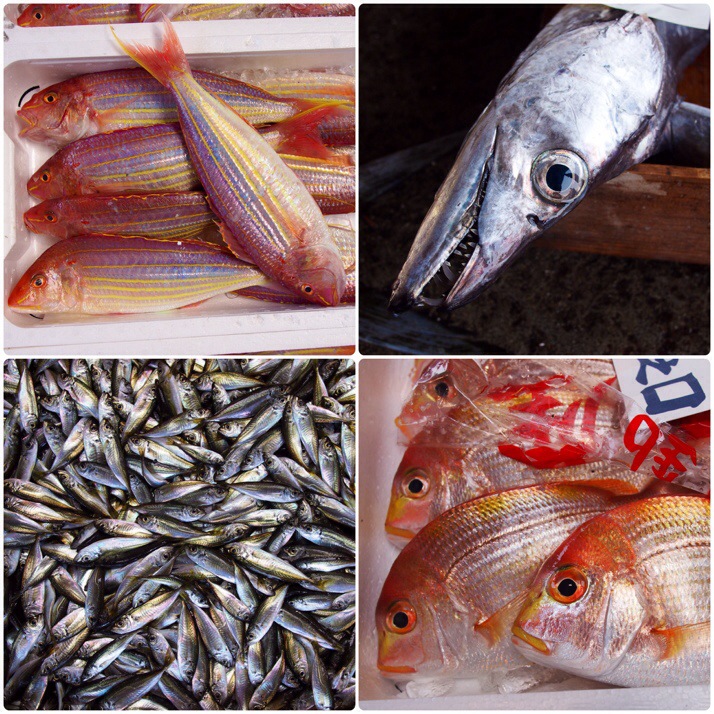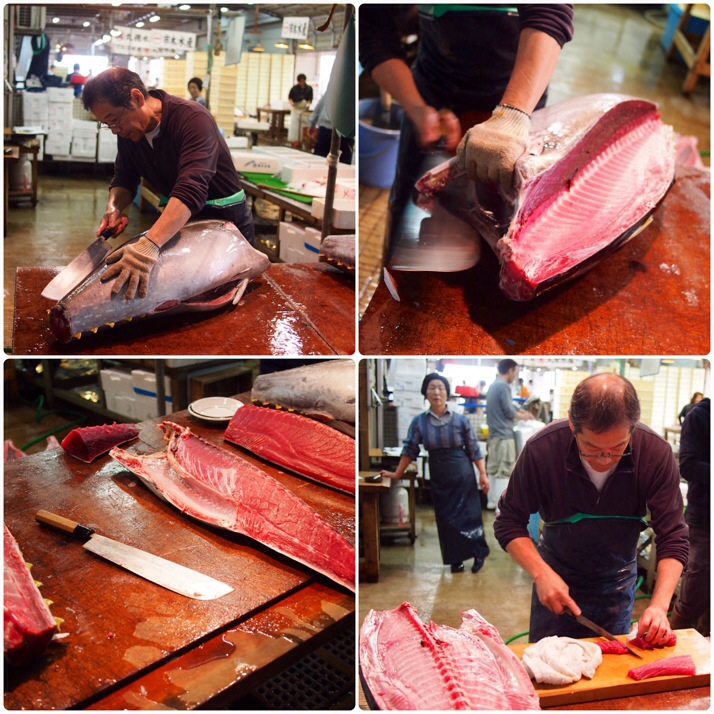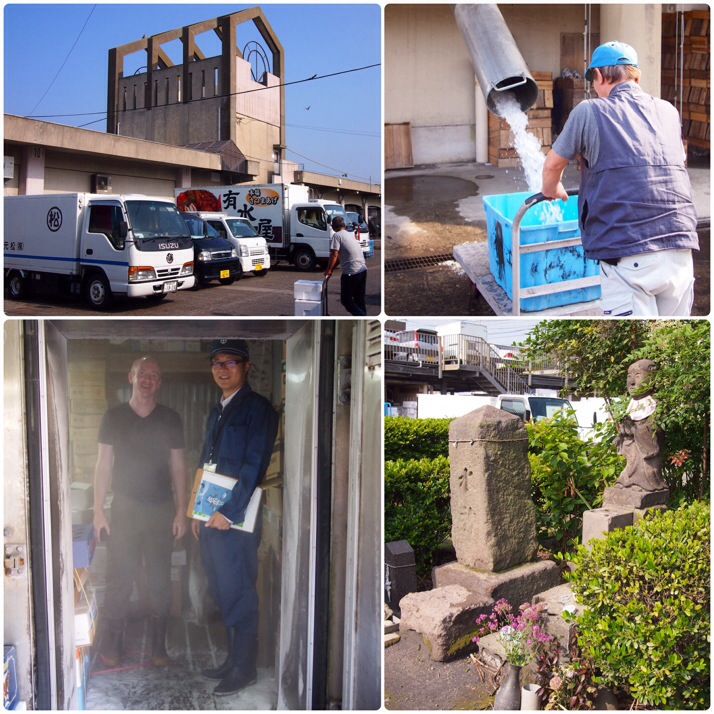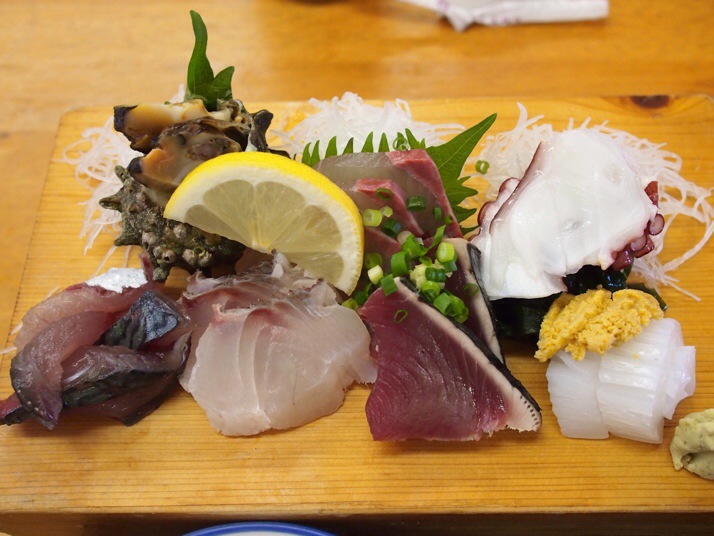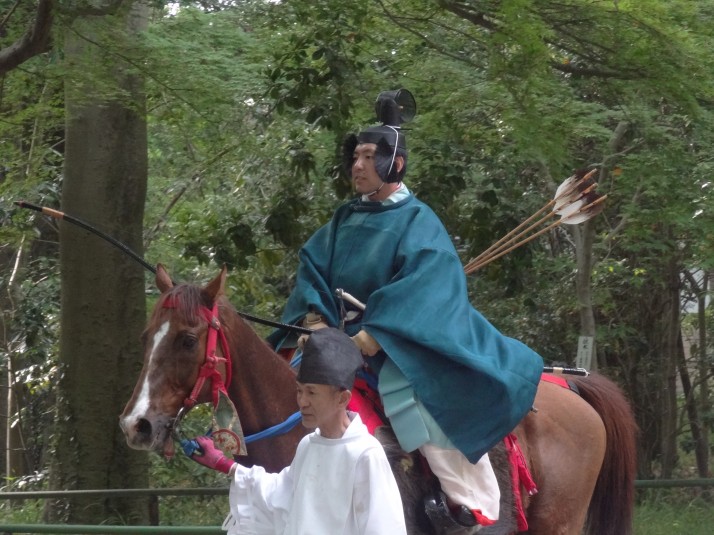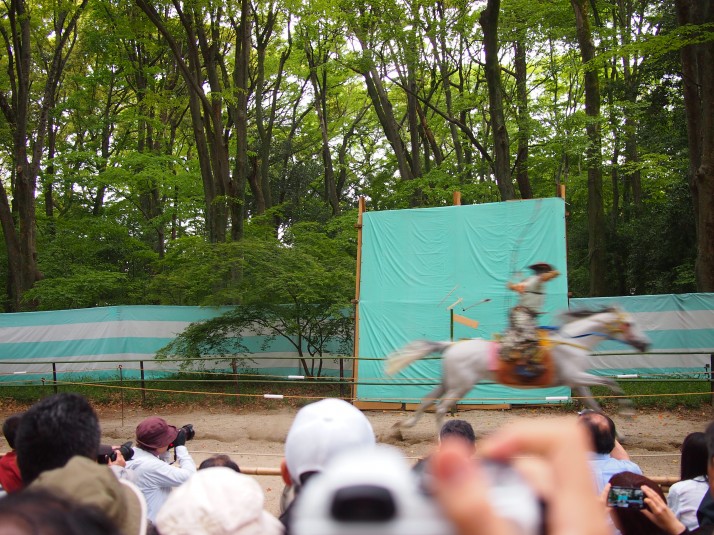I’d been looking for the bonkers Japan since we arrived, and Tokyo delivered. Sure, it’s a capital city much like any other in that it’s full of well-dressed people in a rush to get somewhere, but when the Tokyoites relax, they have an almost unthinkably crazy selection of things to choose from. Here are a few of the ones we were brave enough to try, with a few of my other favourite sights in Tokyo.
Shibuya Crossing
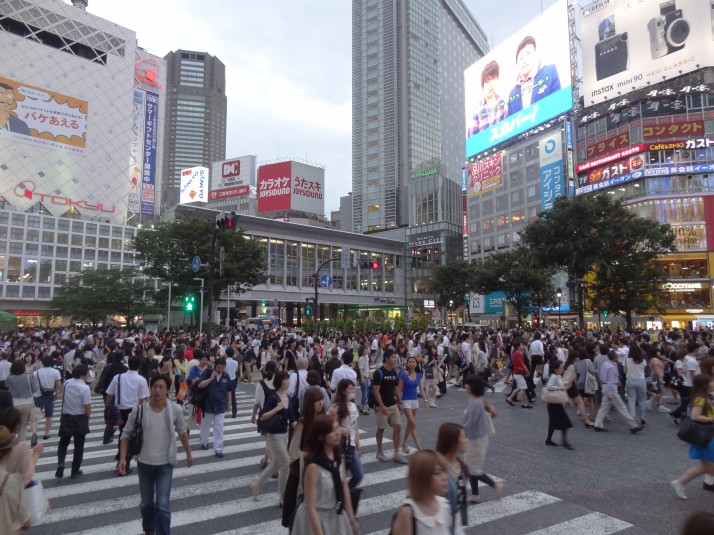
Shibuya’s scramble crossing, one of the busiest in the world and a common meeting place before a night out
You’ve probably already seen Shibuya’s busy pedestrian crossing as it’s a regular feature in movies set in Tokyo, such as Lost in Translation and two of The Fast and the Furious movies:
The final closing scene of Fast and Furious 6 with an amazing 360 shot of Shibuya crossing
The Lockup
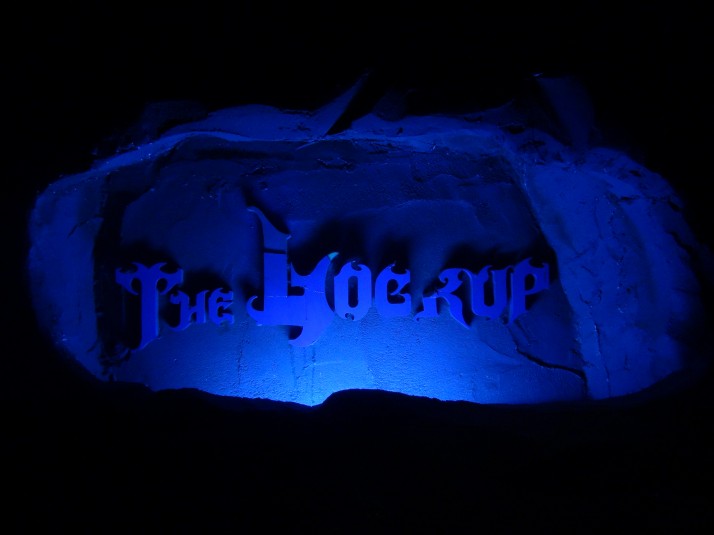
The Lockup, one of the many themed restaurants in Tokyo
While researching places to eat, I discovered the genre of “entertainment restaurants” and knew this was something we had to try. I decided on “The Lockup” and once we’d found it we cautiously ventured down the stairs and opened the door to a dark, empty corridor. If this were any other restaurant we’d have thought they were closed, but we took a few steps in and triggered the lights on a barrel of toxic waste.. up ahead we could make out a hunched-over figure in an electric chair and all the while we were waiting for someone to jump out at us! The haunted castle-like entrance almost robbed us of our appetite, but we pressed on until we reached another door where we were greeted and asked to wait for a table.
A minute or so later a waitress dressed provocatively in a cross between an official police uniform and a frilly maid-cafe outfit recited the rules before putting me in handcuffs and leading us to our table!
Half of the menu was themed cocktails with names like “Electric shock”, “Human Experiment Z” and “Lethal Injection”, all served in laboratory glassware which was great fun.
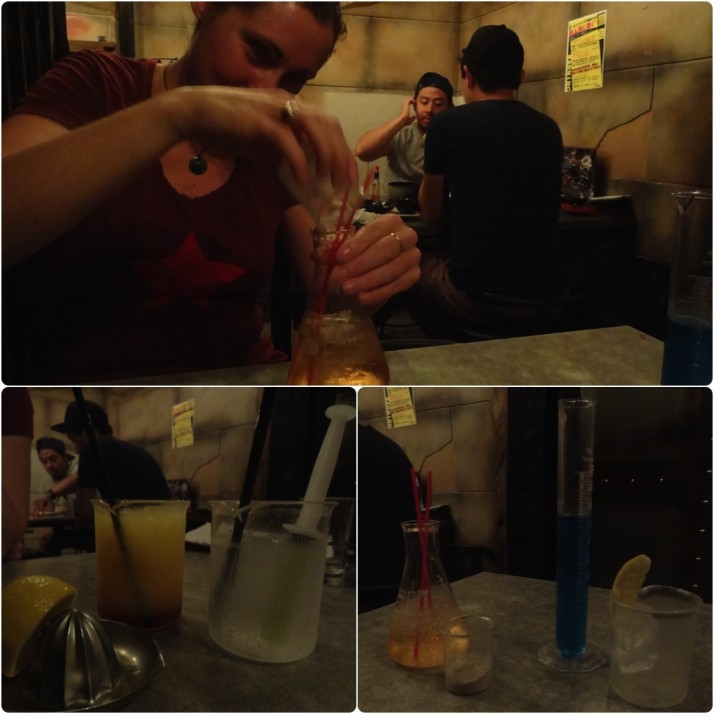
A selection of the cocktails we ordered at The Lockup
The food was likewise themed and presented in creative ways, such as a crucifix-shaped pizza, “Friday the 13th Salad” and their speciality of “Charcoal Chicken” which looks so charred I wondered if my
Our food had just arrived when suddenly the lights went out, a dramatic conversation between a husband and wife started playing over the speakers that quickly escalated into fear and screaming. No-one knew what was going on. The 2 girls on the table of 4 behind us swapped so the boys were near the door to our cell, and then we started hearing real screams from the restaurant that were getting closer.. it was pretty terrifying! I caught a glimpse of something in white rags run past our cell and heard what sounded like a fire-extinguisher going off before the dramatic music faded and the lights came back on! Whew!
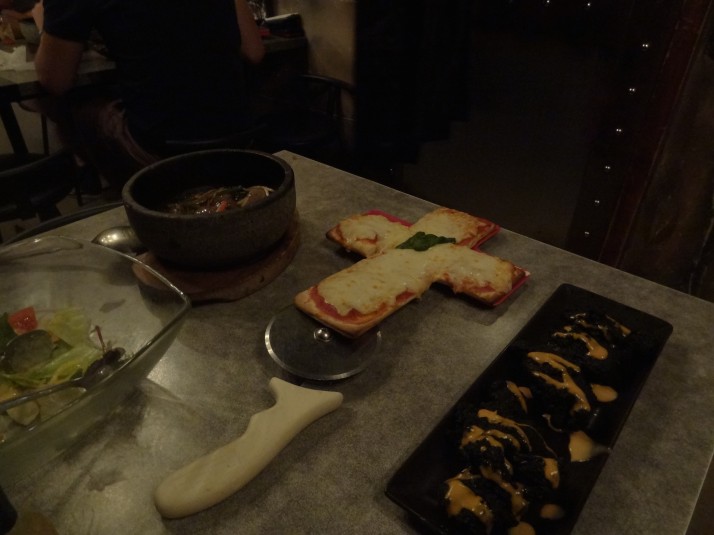
Our food at The Lockup in Shibuya (left to right): Friday the 13th Salad (because it has 13 ingredients); Firebowl Beef which the waiter set on fire!; Crucifix-shaped Pizza; and their signature Charcoal Chicken
The cocktails were good fun, and I’d recommend the strongest ones as we couldn’t taste any alcohol in the medium ones. The food was pretty good which surprised us as we’d read mixed reviews, I’d say it was akin to good chain-pub food back home, lots of variety, freshly prepared and tasty too.
Akihabara – Electric City
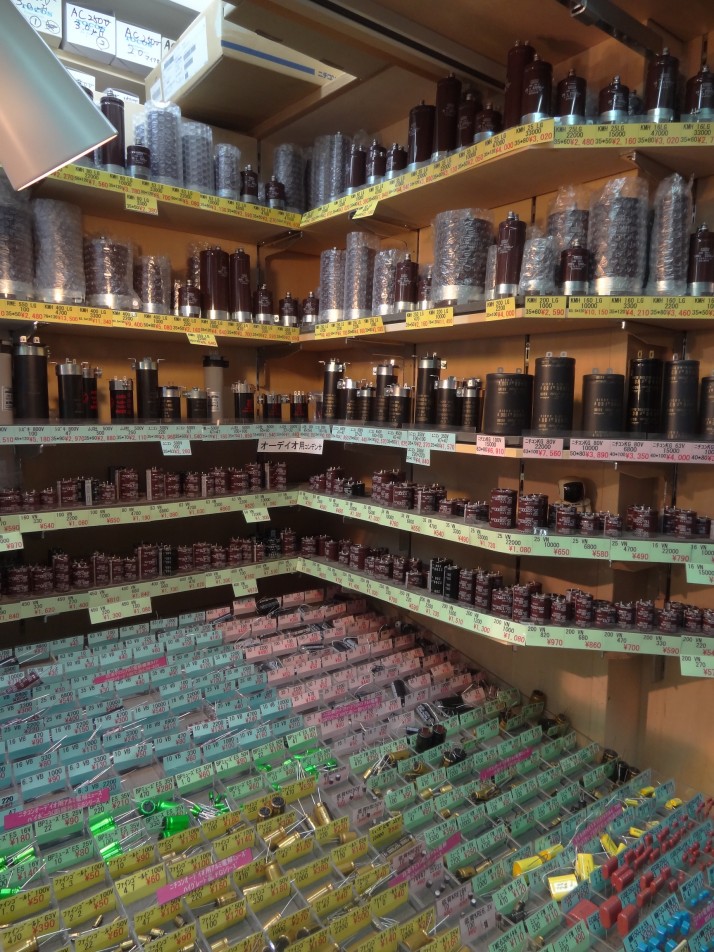
One of the many electronic components stalls in Akihabara that specialise in one thing – LED lights, switches, enclosures, transformers or in this case, capacitors
Akihabara’s reputation for technology started in the 1920s with the opening of an electronic radio parts shop. One after another opened up nearby and soon the area was an electrical engineer’s heaven. While there’s still an area of electronics supply shops selling all manner of components and gadgets, nowadays Akihabara is consumer electronics, pop music sensation AKB48, geek culture, maid cafes, and of course, the thing we visited for – video game arcades!
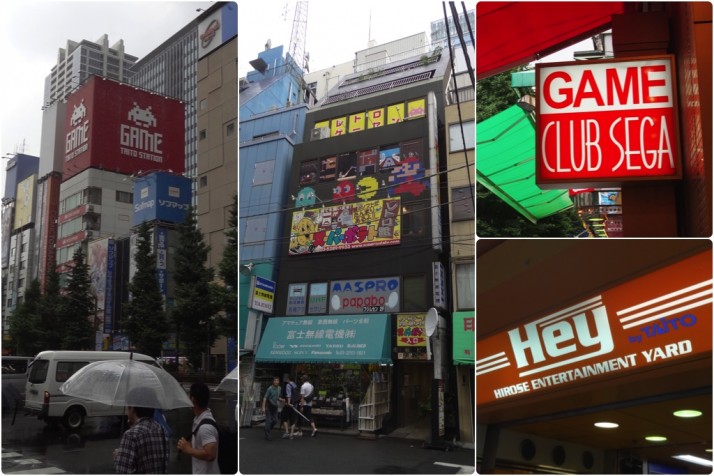
The multi-floor arcade palaces of Akihabara: One of the two Taito arcades (this one is 7 storeys); Super Potato! – the Nintendo-focused 3 floors of second-hand games, like a bricks-and-mortar eBay, whose top floor is also a small arcade; Sega also have two multi-storey arcades – Club Sega is 7 storeys; and the Hirose Entertainment Yard – head straight to the 2nd floor!
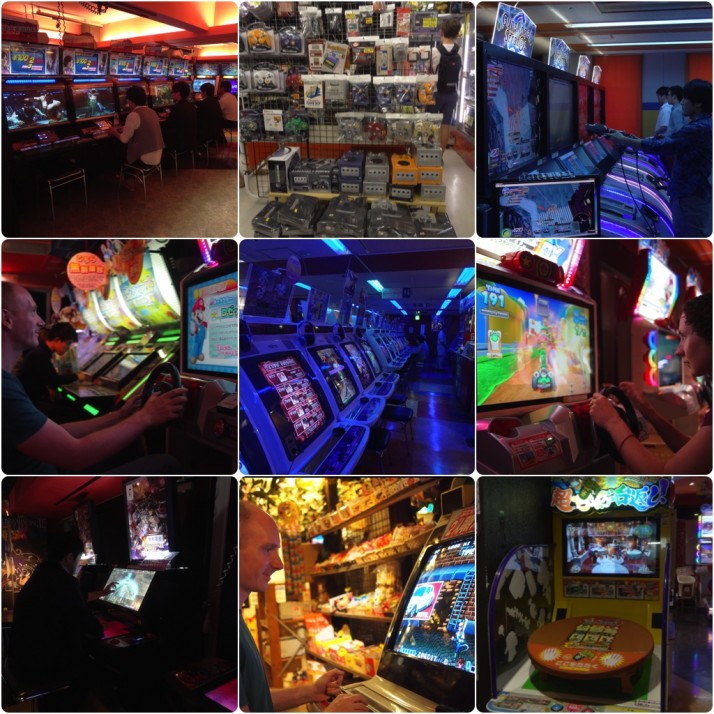
Julie and I (OK, mostly I) playing video games. Oh yeah! From top-left: Rows of beat-em-ups; Generations of consoles in the excellent Super Potato!; An entire floor dedicated to Gunslinger Stratos 2; Me playing Mario Kart Arcade GP DX; One of the countless rows of shmups in Taito HEY; Julie concentrating hard playing Mario Kart Arcade GP DX (she also came 1st!); One of about 12 Lord of Vermillion III arcades that seemed to be the lovechild of DoTA and a CCG; Me in Super Potato reliving fond memories of the hours my brother Dan and I spent on Double Dragon; Plenty of inventive arcade games such as this one where you have to flip a table in rage!
The Taito
It was cool to see that the art of the video-game cabinet has moved on apace in Japan. There are entire floors given over to single titles like Gunslinger Stratos 2 and Ultra Street Fighter IV, where all of the machines are connected for multiplayer. Some looked like they were connected to the internet (to other arcades, perhaps?) which could mean city, country or world-wide battles and competitions, and Lord of Vermillion III seemed to involve buying or trading character cards, where the action was controlled by moving the cards on a special surface and issuing commands on a touch screen.
All of the arcades were really loud, and sadly we found them to be pretty smoky too. After a couple of hours Julie and I started getting headaches.
Koshikawa Korakuen Garden
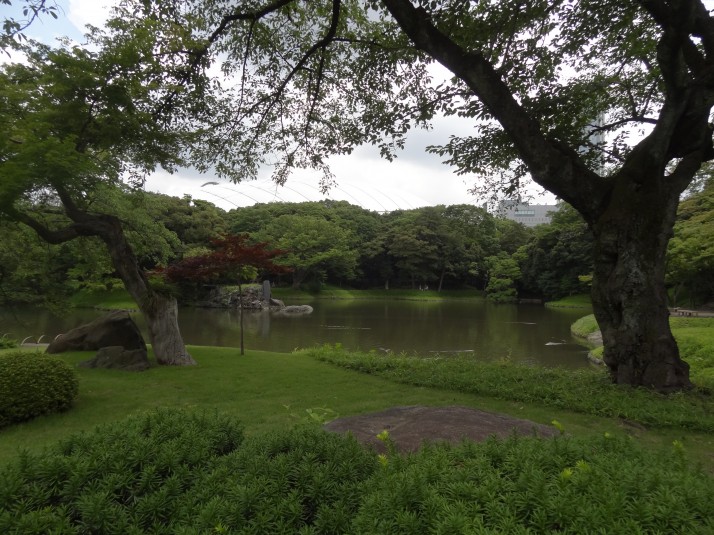
Koshikawa Korakuen Garden – one the oldest and best preserved parks in Tokyo
If you’ve been following our adventure, you will already know that I love gardens, and especially Japanese ones. Surrounded by trees, streams and ponds it was easy to forget that we were in the centre of Tokyo – until the theme park next door started blaring dance music at 10am!
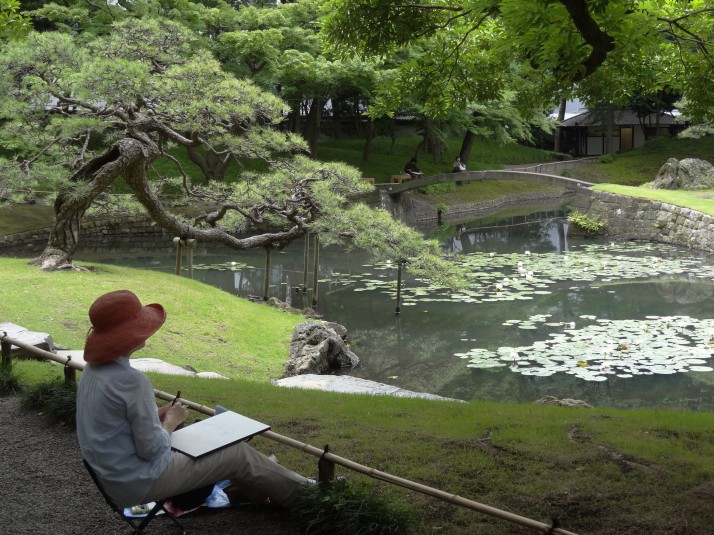
The “indoor garden” section of Koshikawa Korakuen attracts many artists trying to capture the beauty and tranquility
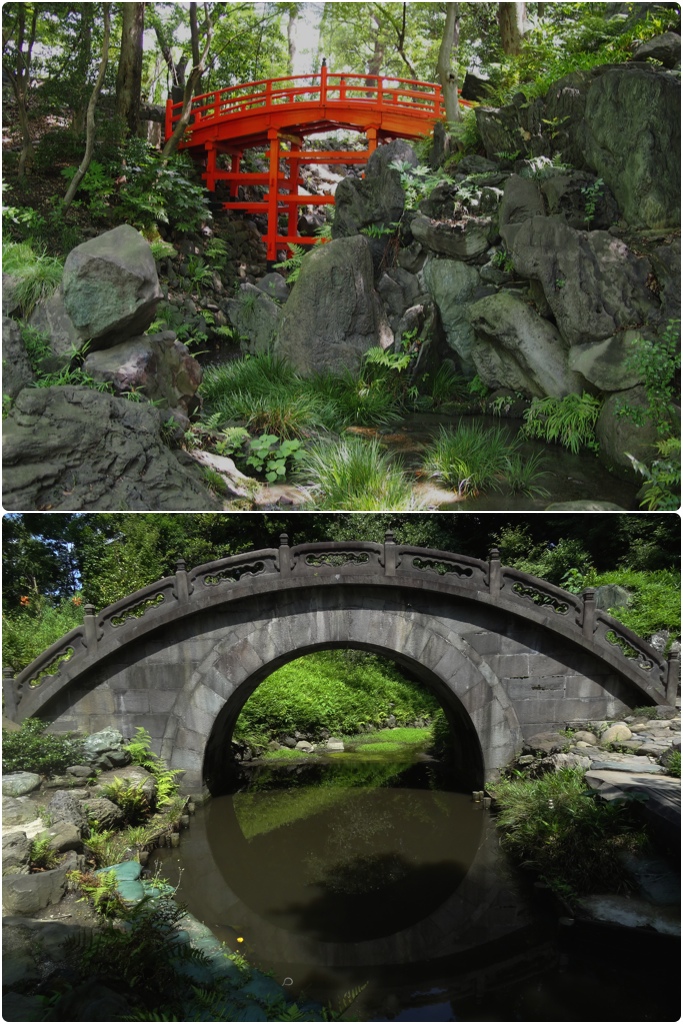
Koshikawa Korakuen is known for its bridges: The Tsutenkyo Bridge; and the Engetsukyo or “Full-Moon” bridge
After a 2 hour stroll, we read on the way out that the garden was originally 4 times its current size – now that’d be a lot of strolling!
Tokyo National Museum
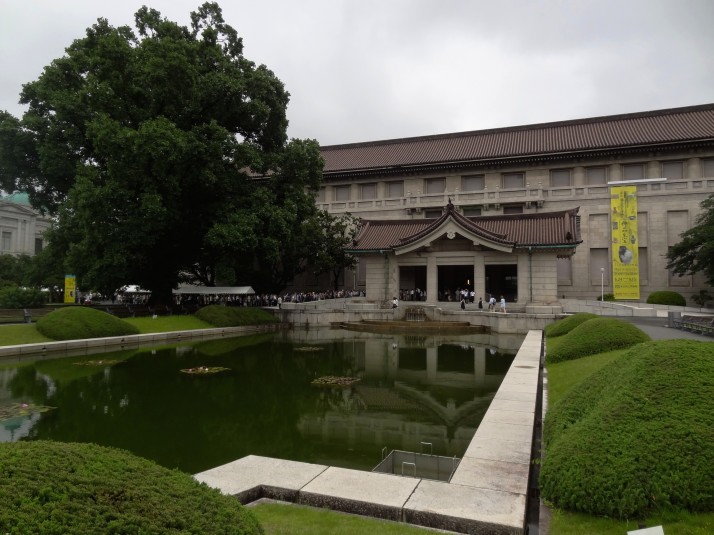
Honkan – the main building of the Tokyo National Museum
The Tokyo National Museum is the longest running museum in Japan, and its collection is about 114,000 items of which only 4,000 are on display at any given time.
While many museums would try to display as many items as possible, the TNM’s starting point – the second floor of the Honkan building – presents just a handful of antiquities per era which gives a nice taster of the periods in Japanese history. The ground floor is then given over to rooms filled with antiquities by genre or type – Buddha statues, pottery and ceramics, samurai swords, theatre costumes, etc.
We loved the layout – it was a really good way of holding our interest and keeping our attention. All too often in museums we find ourselves fatigued at having looked at so many examples of one thing that they all tend to lose their importance.
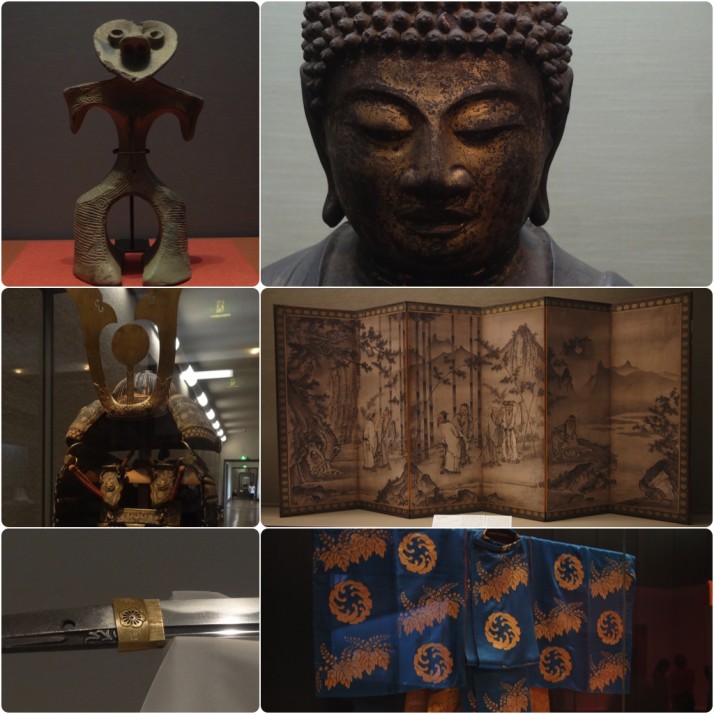
Exhibits in the Tokyo National Museum, Honkan building (clockwise from top left): Dogu (clay figurine) Jomon period 2000-1000 BC; Seated Yakushi Nyorai, Heian Period 9th century; Seven Sages in the Bamboo Grove folding screen, Muromachi period 16th century; Kariginu (Noh theatre costume), Edo period 18th century; “Kanze Masamune” Katana Sword, Kamakura period 14th century; Domaru Type Armour, Muromachi period 15th century
We also visited the very zen-like building of The Gallery of Horyuji Treasures, which houses an exquisite collection of standing Buddha figures.
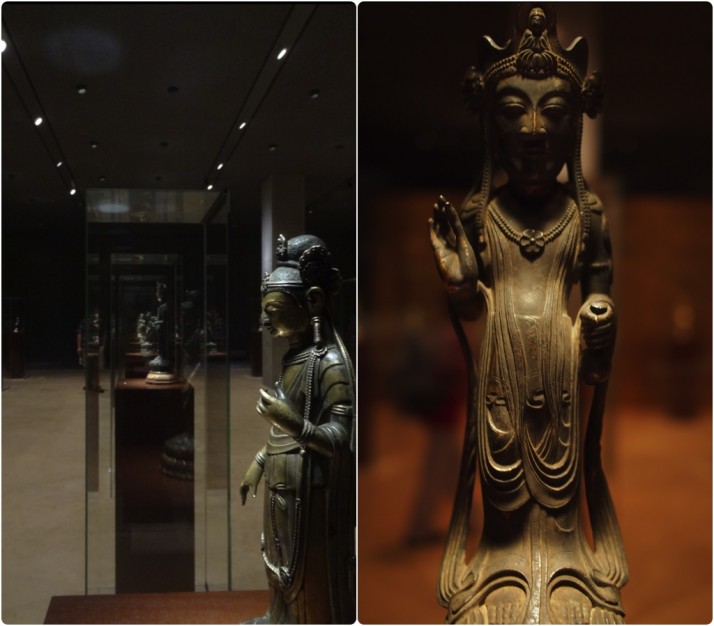
The Gallery of Horyuji Treasures. View of one of the many rows of Buddha figurines with “Standing Kannon Bosatsu” at the forefront, Asuka period 7th century; Closeup of a different depiction of Standing Kannon Bosatsu, Asuka period 7th century
Harajuku
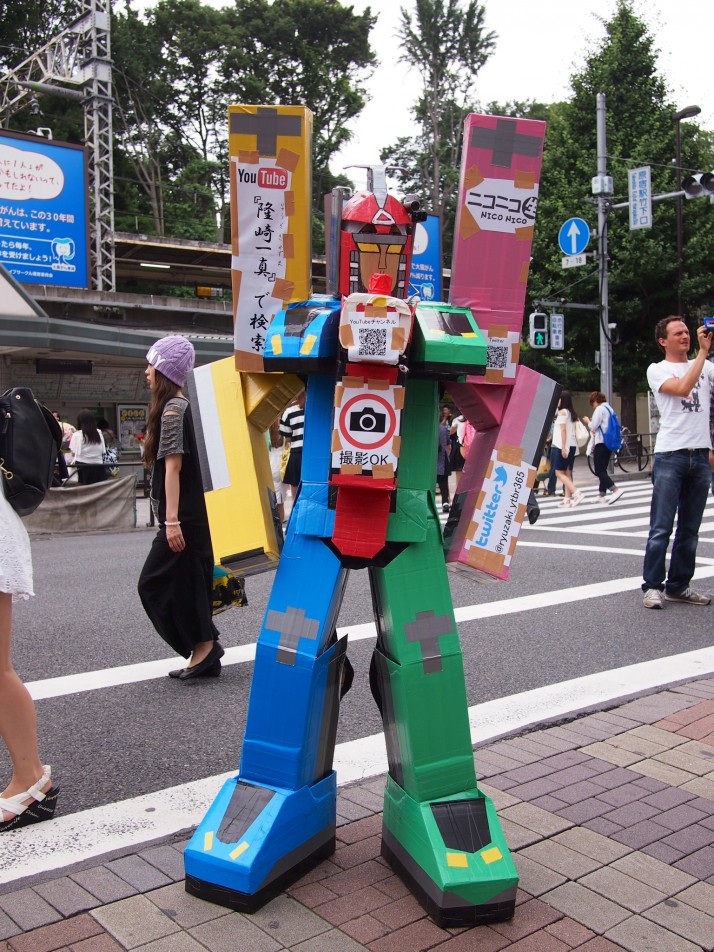
Aside from the Japanese youth culture and fashion, there were a lot of street stalls advertising shows – which is what we assumed this guy dressed as a robot was doing!
Harajuku is a suburb of west Tokyo that sits between the exclusive boutiques of Omotesando and the bustle of entertainment in Shibuya, and is known for its sub-culture of alternative fashion style which young people dress up and show off at weekends. Their style inspired Gwen Stefani’s song Harajuku Girls – now you know what she was singing about!
Before heading into the heart of Harajuku, we paid a visit to the Meiji Jingu Shrine and we arrived in time to witness a wedding party parade through the main temple square.
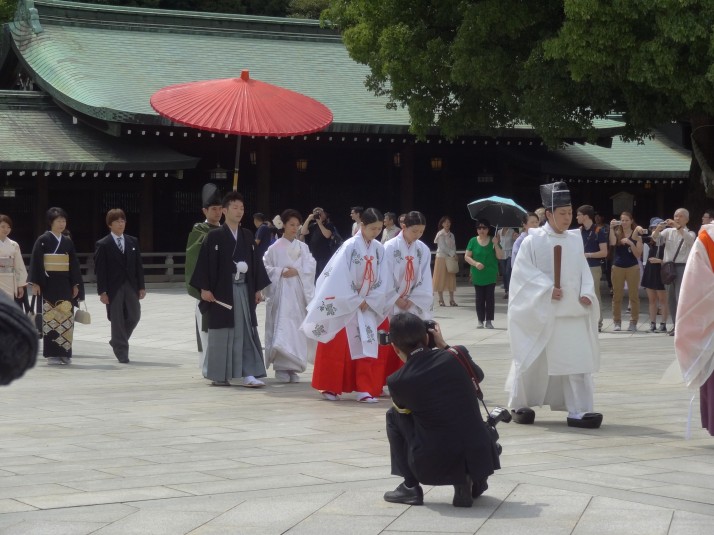
A wedding party parade through the main square of the Meiji Jingu Shrine in Harajuku
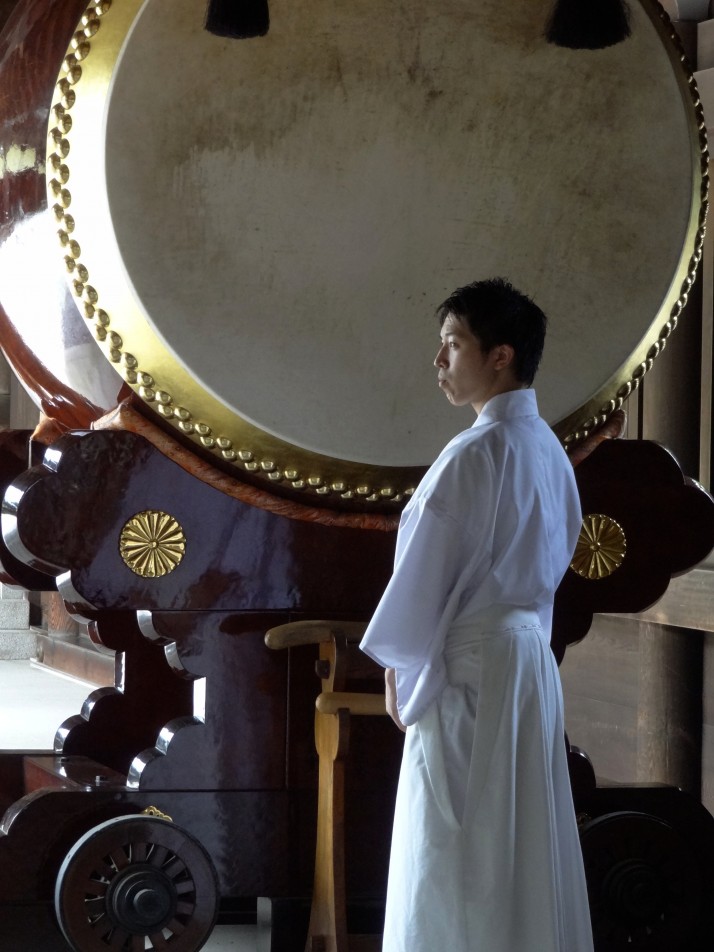
My favourite photo of the day, (presumably) a Shinto priest waits for the signal to play the drum as part of the wedding ceremony at the Meiji Jingu Shrine in Harajuku
After the Meiji Jingu Shrine, our route through Harajuku took us down the unfortunately transliterated “Takeshita Street”, which was as busy as the Shibuya crossing!
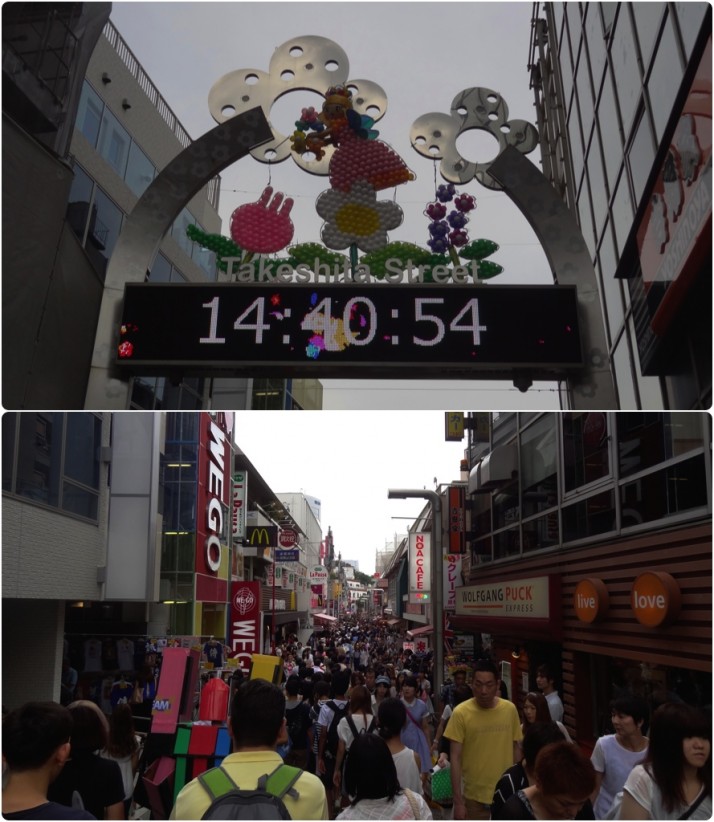
Takeshita Street, the main shopping street for sub-culture fashion in Japan. And crepes filled with just about everything, including cheesecake. Yes, cheesecake in a crepe. Genius.
As I’d read, the dressed up locals are few and far between these days and the most outrageous costumes we saw were worn by some of the shop staff! However, our favourite shop of Harajuku was on Cat Street called B-Side Labels – touting original stickers with a distinctly Japanese attitude. I’m not really one for putting stickers on things, but had I spent more time in this shop I would have been converted, they’re fantastic!
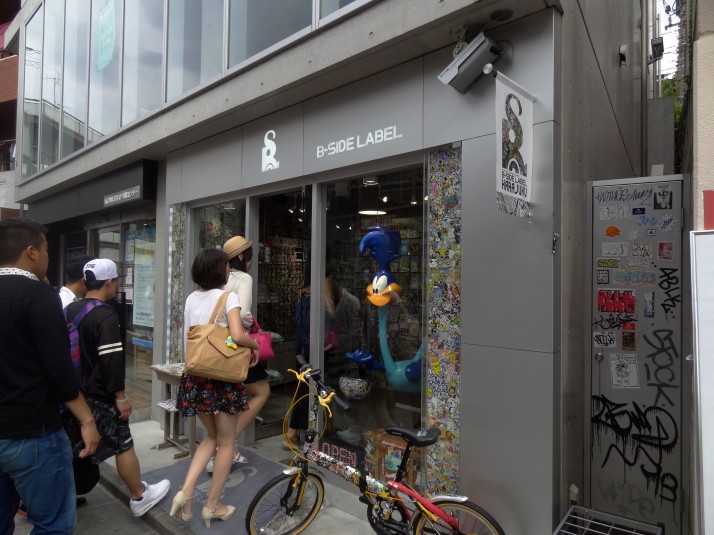
B-Side Label in Cat Street, Harajuku. STICKER ALL THE THINGS!
Ghibli Museum
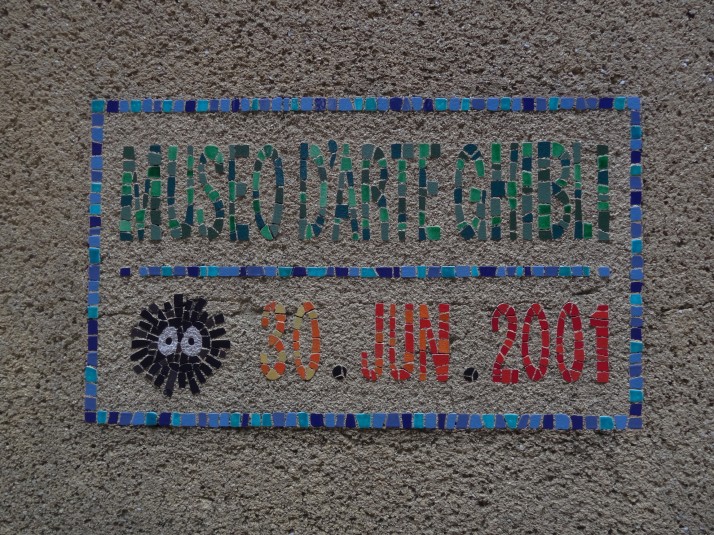
Plaque near the entrance to the Ghibli Museum. I’ve no idea why it’s in French!
Yes, Julie included the Ghibli Museum in her list of Tokyo highlights, but I had to include it in mine too. I loved the focus it has towards children; lots of little tunnels and walkways for kids to explore, and no set path through the museum – once you get your ticket (which includes 3 frames from an actual Studio Ghibli movie roll) and descend the staircase, where you go is up to you!
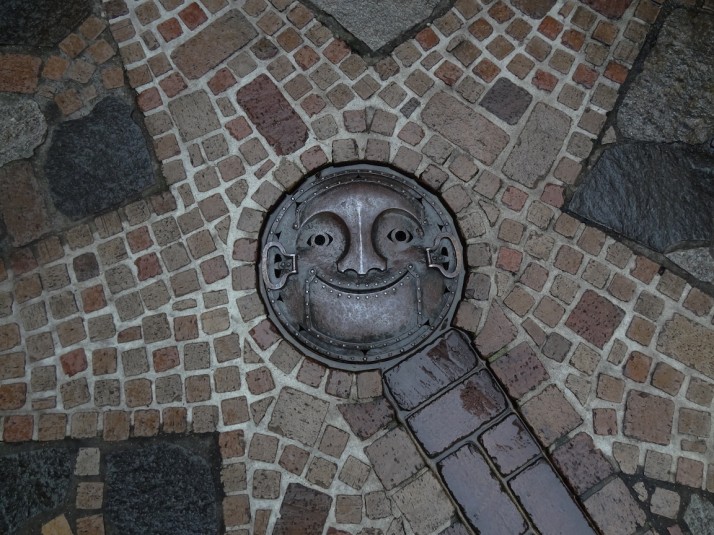
I also loved the attention to detail, like the face in this manhole cover in the courtyard
I hadn’t seen any Studio Ghibli movies before we arrived in Japan, I’m glad we watched a few before we visited, as it was fun to spot the characters hiding all over the building.

 two year trip
two year trip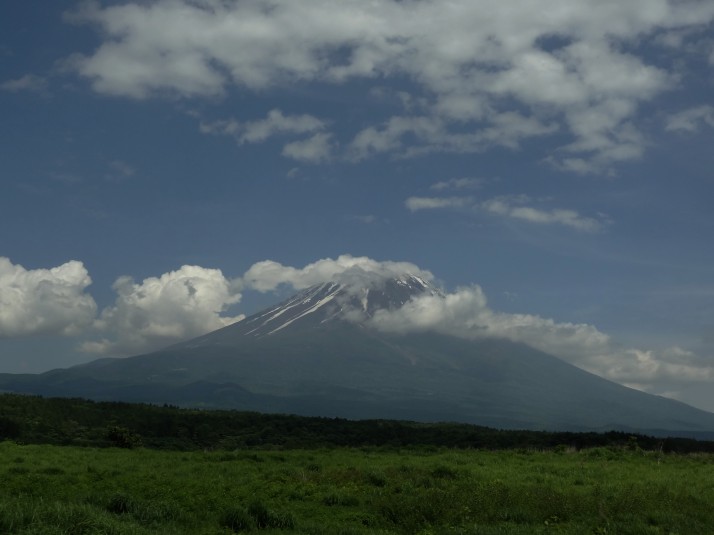
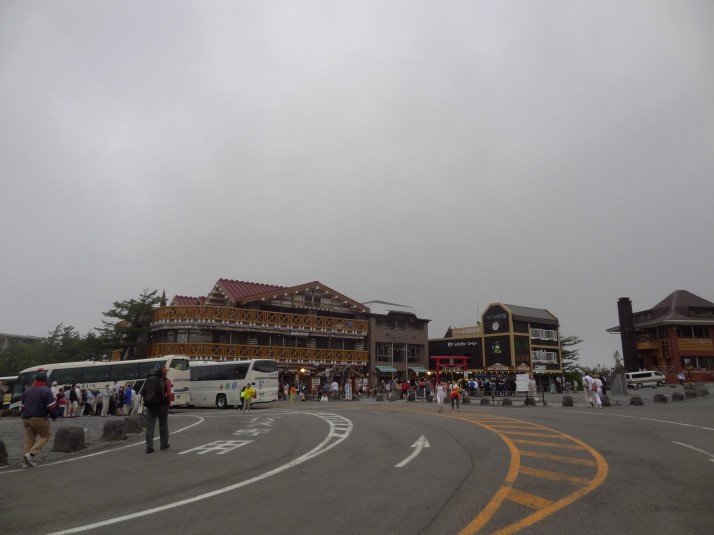 2305m: The starting point of the popular Yoshida Trail – Yoshida-guchi 5th Station (of 10). We weren’t expecting it to be so busy with day-trippers who had arrived by coach to shop and eat ice-cream!
2305m: The starting point of the popular Yoshida Trail – Yoshida-guchi 5th Station (of 10). We weren’t expecting it to be so busy with day-trippers who had arrived by coach to shop and eat ice-cream!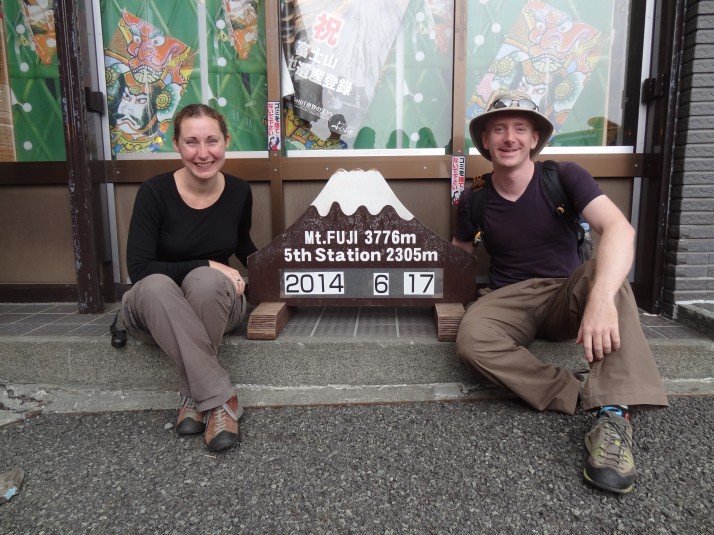 2305m: Us at the 5th Station, we joined in with the day-trippers and had our photo taken, but we didn’t stop for ice-cream, we’ve got a mountain to climb!
2305m: Us at the 5th Station, we joined in with the day-trippers and had our photo taken, but we didn’t stop for ice-cream, we’ve got a mountain to climb!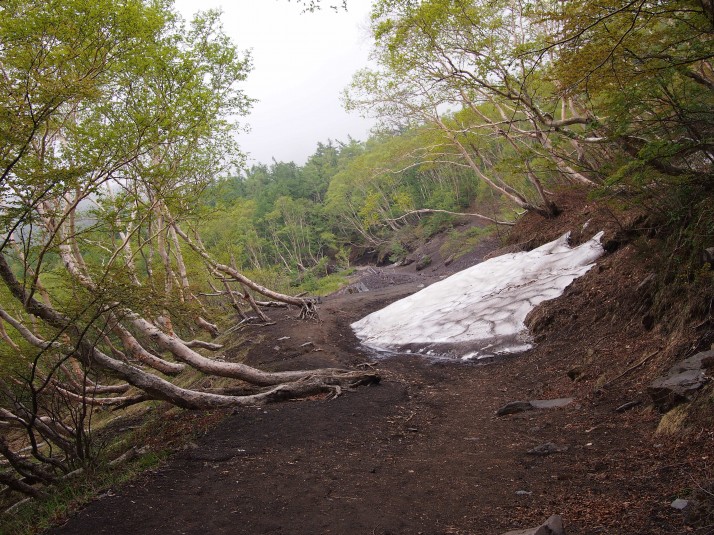 2305m: The Yoshida Trail really starts just around the corner from the souvenir shops. Less than 5 minutes in we find that there’s still snow on the ground at the end of June and hardly another person in sight
2305m: The Yoshida Trail really starts just around the corner from the souvenir shops. Less than 5 minutes in we find that there’s still snow on the ground at the end of June and hardly another person in sight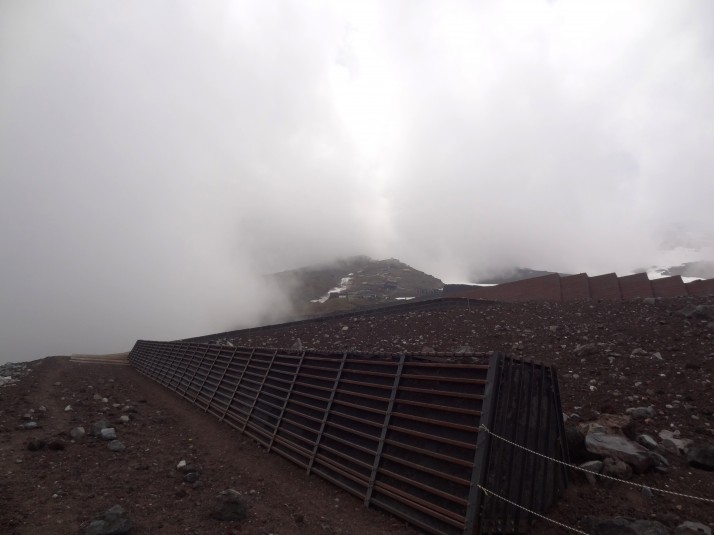 2390m: Just past Station 6 the ascent begins up the gravelly alien landscape of volcanic Mount Fuji. These large barriers are to prevent and protect against landslides
2390m: Just past Station 6 the ascent begins up the gravelly alien landscape of volcanic Mount Fuji. These large barriers are to prevent and protect against landslides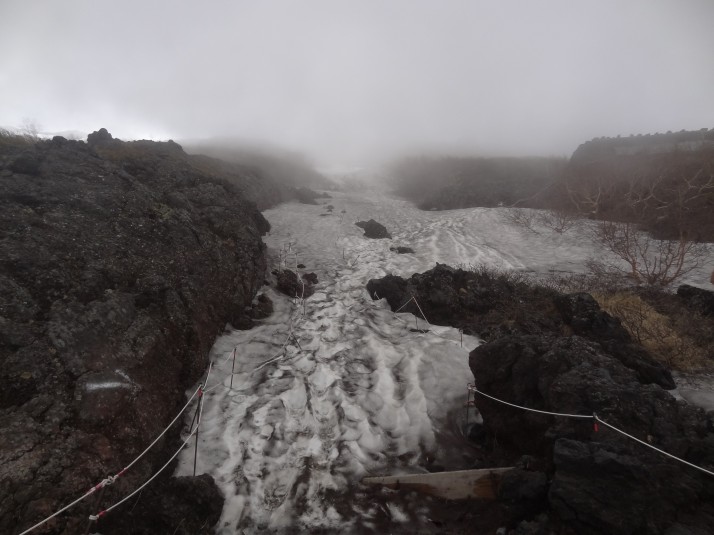 2672m: Snow blocks the trail just before the 7th Station. We’re still two weeks from the start of the official hiking season when the trails are cleared and the first-aid huts are manned
2672m: Snow blocks the trail just before the 7th Station. We’re still two weeks from the start of the official hiking season when the trails are cleared and the first-aid huts are manned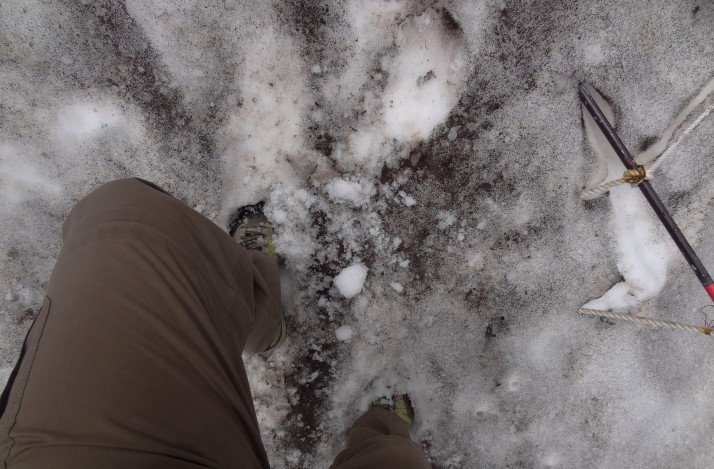 2673m: Undeterred, we carefully make our way through the snow by kicking in footholds
2673m: Undeterred, we carefully make our way through the snow by kicking in footholds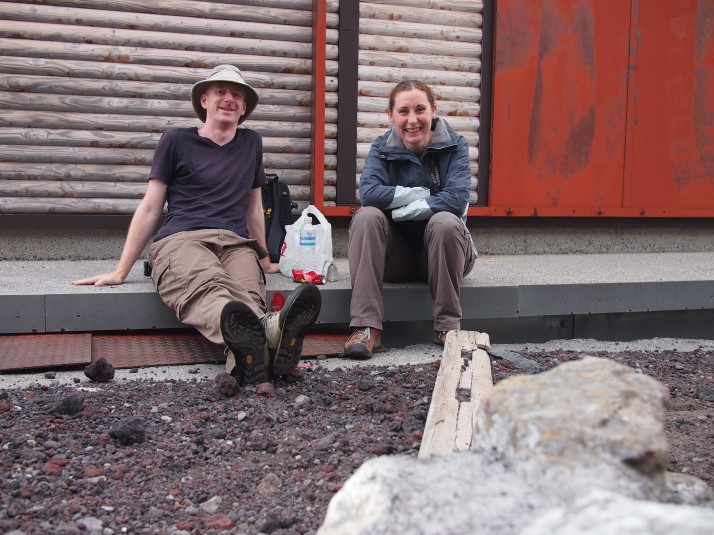 2700m: Stopped for lunch at one of the many huts on the Yoshida Trail. They’ll all be open in a couple of weeks time but for now they’ll do as wind-breaks!
2700m: Stopped for lunch at one of the many huts on the Yoshida Trail. They’ll all be open in a couple of weeks time but for now they’ll do as wind-breaks!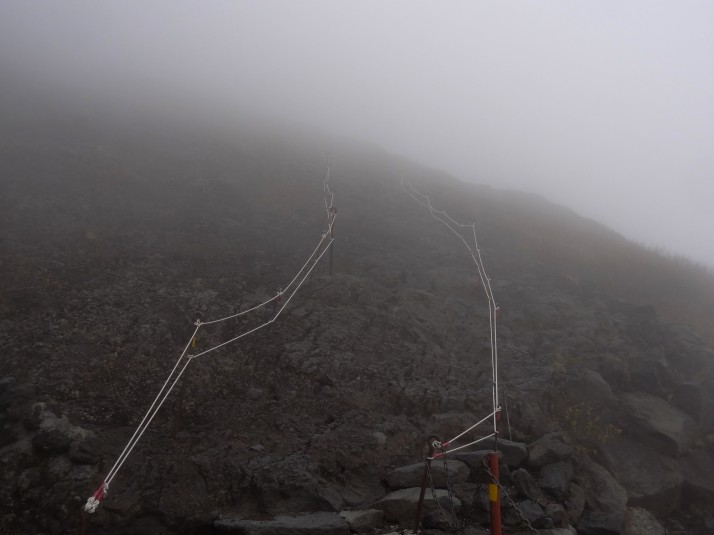 2800m: If it weren’t for these ropes, we’d have no idea where to go
2800m: If it weren’t for these ropes, we’d have no idea where to go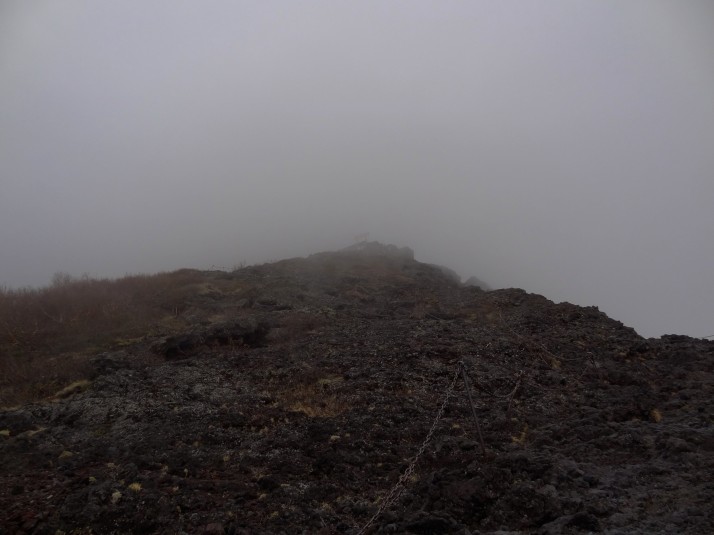 2820m: We decided to stop at the torii we spotted off in the distance, can you see it?
2820m: We decided to stop at the torii we spotted off in the distance, can you see it?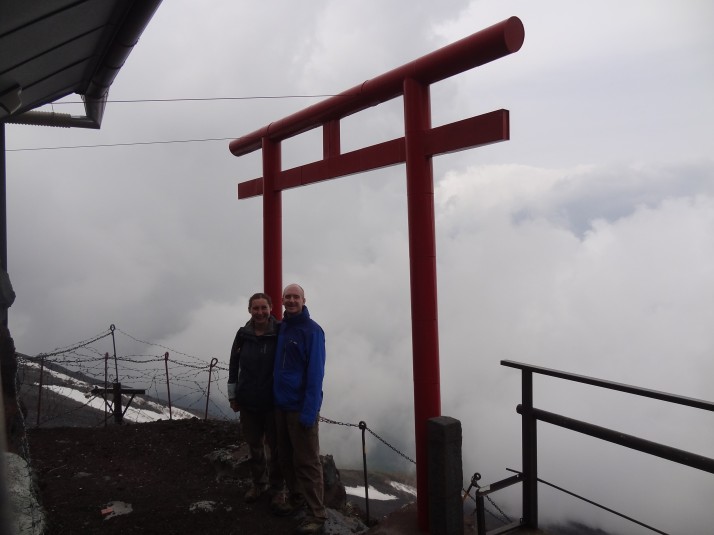 2850m: Us at Torii-no, which is roughly half-way between Stations 7 and 8. It’s as far as we can go this time otherwise we’ll miss our bus home!
2850m: Us at Torii-no, which is roughly half-way between Stations 7 and 8. It’s as far as we can go this time otherwise we’ll miss our bus home!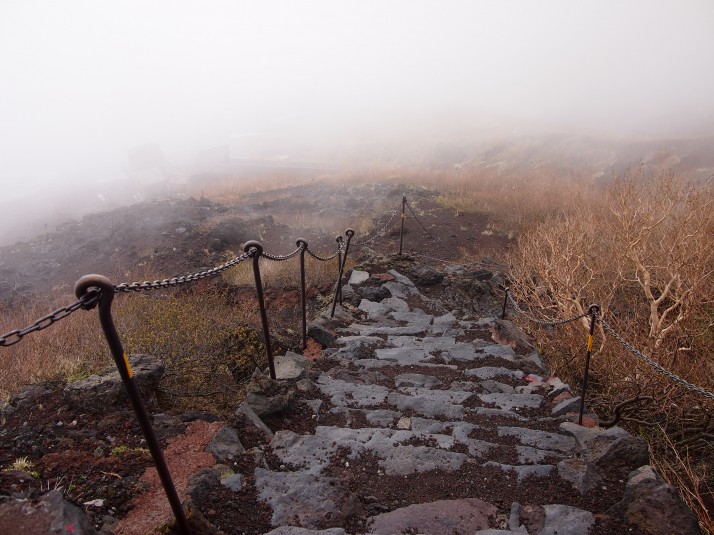 2850m: This is the view as we start our descent, that cloud can roll in quickly!
2850m: This is the view as we start our descent, that cloud can roll in quickly!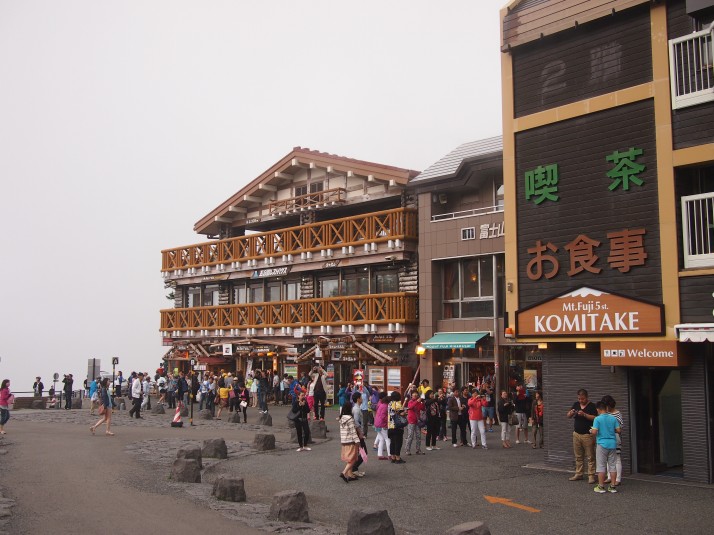 2305m: The Yoshida 5th Station – just as busy as when we left it 5 hours ago!
2305m: The Yoshida 5th Station – just as busy as when we left it 5 hours ago!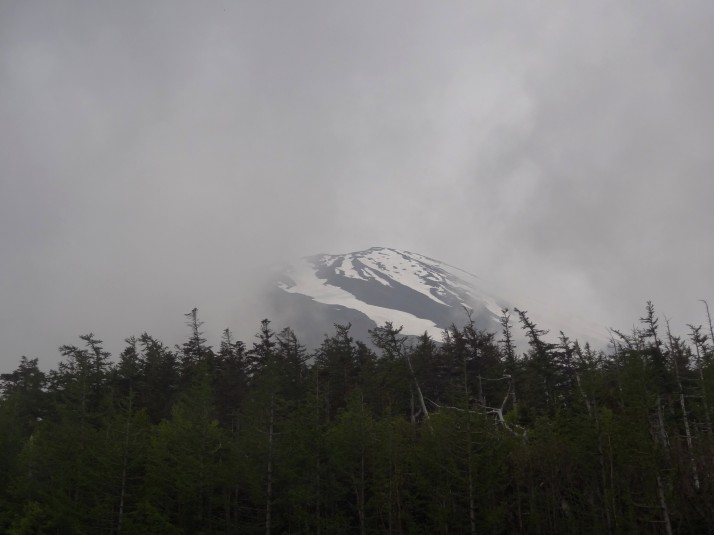 2305m: As we were about to get on the bus, Mount Fuji-san appeared in a break of cloud to say farewell. We’ll be back and next time we’ll make it to the top!
2305m: As we were about to get on the bus, Mount Fuji-san appeared in a break of cloud to say farewell. We’ll be back and next time we’ll make it to the top!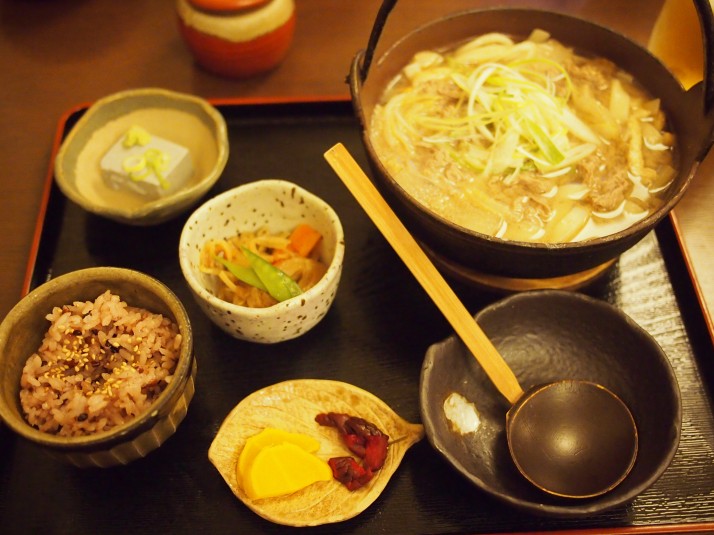 We rested our tired feet and filled our bellies with the local Fuji delicacy of
We rested our tired feet and filled our bellies with the local Fuji delicacy of 